Cisco VWIC3-4MFT-T1/E1 Handleiding
Cisco
Netwerkkaart/adapter
VWIC3-4MFT-T1/E1
Bekijk gratis de handleiding van Cisco VWIC3-4MFT-T1/E1 (9 pagina’s), behorend tot de categorie Netwerkkaart/adapter. Deze gids werd als nuttig beoordeeld door 72 mensen en kreeg gemiddeld 4.6 sterren uit 36.5 reviews. Heb je een vraag over Cisco VWIC3-4MFT-T1/E1 of wil je andere gebruikers van dit product iets vragen? Stel een vraag
Pagina 1/9

Data Sheet
© 2010 Cisco and/or its affiliates. All rights reserved. This document is Cisco Public Information. Page 1 of 9
Cisco Third-Generation 1-, 2-, and 4-Port T1/E1 Multiflex Trunk
Voice/WAN Interface Cards
These flexible interface cards support multiple integrated data, voice and video applications, facilitating the
migration from data only as well as circuit-switched voice/video services to a packet voice/video solution
Introduction
The Cisco® Third-generation 1-, 2-port and 4-port T1/E1 Multiflex Trunk Voice/WAN Interface (MFT VWIC3s) support
data and voice applications on the Cisco 1921, 1941 and 1941W (data only), and the Cisco 2901, 2911, 2921, 2951,
3925, 3945, 3925E and 3945E Integrated Services Routers. The Cisco MFT VWIC3 combines WAN-interface-card
(WIC) and voice-interface-card (VIC) functions to provide unparalleled flexibility, versatility, and investment
protection through its many uses. Customers who choose to integrate data and voice in multiple steps preserve their
investment in a T1/E1 WAN interface because the Cisco MFT VWIC3 cards can be reused in packet voice
applications. The 2 port T1/E1 MFT VWIC3 is shown below.
Figure 1. Cisco 1-,2- and 4-Port T1/E1 MFT VWIC3
The Cisco MFT VWIC3 interface cards add improvements over the Cisco Second-generation 1- and 2-port T1/E1
Multiflex Voice/WAN Interface Cards (MFT VWIC2s). The Cisco 2- and 4-port MFT VWIC3s enable each port to be
clocked from an independent clock source for data applications. Voice applications can now be clocked
independently from data applications, with all ports for voice applications clocked from a single source. The Cisco
MFT VWIC3s use the ECAN on the motherboard PVDM cards with up to 128ms echo-tail length for demanding
network conditions. MFT VWIC3 cards support up to 2 channel groups per T1/E1 port for serial data applications.
Refer to Table 3 for all configuration options offered with the MFT VWIC3 cards.
The Cisco MFT VWIC3 cards can be inserted into the EHWIC slot on the supported Cisco 1921, 1941, 1941W,
2901, 2911, 2921, 2951, 3925, 3945, 3925E and 3945E integrated services routers. The T1/E1 MFT VWIC3 cards
support both T1 and E1, providing additional flexibility in configuring the Cisco MFT VWIC3s for supporting T1,
fractional T1, E1, and fractional E1 for both voice and WAN applications. All MFT VWIC3 modules include the drop-
and-insert multiplexing capability, which eliminates costly external third-party channel service units/data service units
(CSUs/DSUs) and drop-and-insert multiplexers.

Data Sheet
© 2010 Cisco and/or its affiliates. All rights reserved. This document is Cisco Public Information. Page 2 of 9
The Cisco MFT VWIC3 cards are offered in single-, dual- and quadruple-port versions, which can be used and then
redeployed as network requirements change, thereby addressing several applications:
● T1/E1 data: The Cisco 1-, 2- and 4-port T1/E1 MFT VWIC3 versions act as a WIC, supporting T1, fractional
T1, E1, (including structured G.703 with G.704 framing), fractional E1, and E1structured G.703 applications.
To simplify remote management, these MFT VWIC3 cards integrate a fully managed DSU/CSU for T1
deployments and a fully managed DSU for E1 deployments.
● E1/G.703 data: The Cisco 1- and 2- port G.703 MFT VWIC3 versions act as a WIC, supporting T1, fractional
T1, E1 (including structured G.703 with G.704 framing), fractional E1, and unstructured E1 (G.703)
applications. To simplify remote management, the G.703 version includes a fully managed DSU. The G.703
versions also support all the capabilities on the T1/E1 versions.
● T1/E1 packet voice: The Cisco 1-, 2- and 4-port T1/E1 MFT VWIC3 (voice and WAN) versions act as a VIC,
supporting packet voice applications by providing T1, fractional T1, E1, and fractional E1 connections to
private branch exchanges (PBXs) and central offices, thereby enabling new services and reducing voice and
fax toll charges.
● Mixed data and packet voice: The Cisco MFT VWIC3 interface cards can simultaneously support both data
and voice, reducing the complexity and number of network components and facilitating a graceful migration to
bandwidth-efficient packet voice.
● Mixed data and packet voice with drop and insert: The Cisco MFT VWIC3 cards can be deployed as a
T1/E1 drop-and-insert multiplexer with integrated DSUs/CSUs, reducing the complexity of the network and
the cost of the central-office ports by efficiently combining time-division multiplexing (TDM) voice (PBX), IP
voice, and data on the same trunks. Cisco 1900, 2900 and 3900 ISR routers support drop and insert between
ports over a single MFT VWIC3 card and two ports over two different MFT VWIC3s
Key Benefits
Reduces Networking Lifecycle Costs
● Enables graceful migration from data-only to multiplexed data and voice to packetized voice applications
● Reduces training, deployment, management, and sparing inventory over single-purpose interfaces
● Maximizes investment protection
● Simplifies network configuration and sparing through the support of both T1 and E1 on the same card
● Offers multifunction support for LAN-to-LAN routing, multiplexed data and voice, and packetized voice
● Offers ability to share modules among Cisco 1900, 2900 and 3900 Series routers
● Increases configuration flexibility and reduces cost for data applications by allowing individual ports to be
clocked from independent clock sources (not supported for voice applications, since all voice enabled ports
must be clocked from a single clock source)
● Supports E1 configurations for both balanced and unbalanced modes
● Supports (G.703 models) unstructured E1 (G.703) for using the full 2.048 Mbps
● Eliminates costly external third-party CSUs/DSUs and drop-and-insert multiplexers
● Simplifies remote network management by allowing a single management tool such as CiscoView or
CiscoWorks to support router, CSU/DSU, or drop-and-insert multiplexer
Maximizes System Resources
● Increases T1/E1 port density on the supported Cisco 2911, 2921, 2951, 3925, 3945, 3925E and 3945E
integrated services routers—up to four T1/E1 connections with an integrated CSU/DSU in a single EHWIC
slot

Data Sheet
© 2010 Cisco and/or its affiliates. All rights reserved. This document is Cisco Public Information. Page 3 of 9
● Offers easy migration to bandwidth-efficient packet voice, enabling new services
Customers can choose to integrate data and voice in stages to preserve their investment in WAN interfaces. For
example, the Cisco MFT VWIC3 can support data-only applications as a WAN interface, and then be reused to
integrate data and voice with the drop-and-insert multiplexer function or configured to support packetized voice
(voice over IP [VoIP] or voice over Frame Relay [VoFR]).
Applications
Packet Voice Solutions: PBX and Central-Office Connectivity
The Cisco MFT VWIC3 interface cards, through its digital T1/E1 ports, supply PBX and public-switched-telephone-
network (PSTN) connectivity for integrated services routers with the on-board EHWIC slots. The integrated services
routers support H.323-, Session Initiation Protocol (SIP)-, Media Gateway Control Protocol (MGCP)-, and Skinny
Client Control Protocol (SCCP)-based VoIP.
Data Solutions: 1- , 2- and 4-Port T1/E1 WIC with Integrated DSU/CSU
The Cisco MFT VWIC3 interface cards simplify branch-office connectivity by integrating the functions of a router,
T1/E1, and fractional T1/E1 serial interface with a fully managed DSU/CSU.
When used for “data-only” WAN connectivity, the Cisco MFT VWIC3 cards support numerous functions, including
Cisco IOS® Software Command-Line Interface (CLI)-initiated loopback control, similar to the popular 1 Port
T1/Fractional T1 DSU/CSU WAN Interface Card (part number HWIC-1DSU-T1. Additionally, the MFT VWIC3 is also
offered in quadruple-port versions, enabling increased WAN port density in Cisco 2911, 2921, 2951 and Cisco 3900
Series routers. The T1/E1 MFT VWIC3 versions include integrated DSU functions for E1 deployments and integrated
CSU and DSU functions for T1 deployments, simplifying remote network management.
The Cisco 4-port MFT VWIC3 interface cards increase configuration flexibility on Cisco Systems
® integrated services
routers, eliminating the need for two dual-port T1/E1 HWICs. Increasing the T1/E1 port density in a single EHWIC
slot helps enable applications such as local serial aggregation with the 2-port high-speed serial WAN Interface Card
(part number HWIC-2T ), or ISDN backup with the 4 Port ISDN BRI S/T WAN Interface Card (part number HWIC-4B-
S/T) or the 1 port ISDN with NT-1 WAN Interface Card (part number HWIC-1B-U).
The Cisco MFT VWIC3 cards also support a channelized capability where the T1 or E1 service can be flexibly split
into one or two fractional channel groups. Thus a single physical port can provide connection to multiple sites.
The Third-generation 1- and 2-port G.703 Multiflex Trunk voice/WAN Interface Cards (product numbers VWIC3-
1MFT-G703 and VWIC3-2MFT-G703) support not only unstructured E1 (G.703) but also all the features of the other
Cisco MFT VWIC3 cards, including drop and insert. Additional flexibility is provided on the 2 port G.703 Multiflex
Trunk voice/WAN Interface Cards with the capability to configure one port for unstructured E1 (G.703) while
configuring the other for standard framed E1.
Multiplexed Data and Voice Solutions: 2- and 4-Port T1/E1 Drop-and-Insert Multiplexer with Integrated
DSU/CSU
The Cisco 1-, 2- and 4-port MFT VWIC3 interface cards simplify branch-office connectivity by helping enable Cisco
2900 and 3900 routers to consolidate the functions of a router, a fully managed drop-and-insert multiplexer, and a
fully managed DSU/CSU into a single box. (It is possible to use two Cisco 1-port MFT VWIC3 interface cards for
supporting the drop-and-insert feature. Generally, a Cisco 2- or 4-port MFT VWIC3 is more appropriate because at
least 2 ports are required.) Typically a drop-and-insert multiplexer is used for channelized (that is, TDM) integration
of data and voice onto a single T1, fractional T1, E1, or fractional E1 connection to the central office. Sharing a line
can significantly reduce costs over those of two separate physical lines to the central office. Although the normal use
Product specificaties
| Merk: | Cisco |
| Categorie: | Netwerkkaart/adapter |
| Model: | VWIC3-4MFT-T1/E1 |
| Gewicht: | 95 g |
| Breedte: | 78.2 mm |
| Diepte: | 120.4 mm |
| Hoogte: | 19.1 mm |
| Temperatuur bij opslag: | -25 - 70 °C |
| Luchtvochtigheid bij opslag: | 5 - 95 procent |
| Compatibiliteit: | Cisco 1921, 1941, 1941W, 2901, 2911, 2921, 2951, 3925, 3945, 3925E, 3945E |
| Aantal connectors: | 4 |
| Bedrijfstemperatuur (T-T): | 0 - 40 °C |
| Relatieve vochtigheid in bedrijf (V-V): | 5 - 85 procent |
| Aansluiting type: | RJ-45 |
Heb je hulp nodig?
Als je hulp nodig hebt met Cisco VWIC3-4MFT-T1/E1 stel dan hieronder een vraag en andere gebruikers zullen je antwoorden
Handleiding Netwerkkaart/adapter Cisco

29 Maart 2025

21 Juni 2023

11 Maart 2023

6 Maart 2023

3 Maart 2023

22 Februari 2023

2 Februari 2023

1 Februari 2023

6 Oktober 2022
Handleiding Netwerkkaart/adapter
- Iconbit
- Intellinet
- Barox
- Satechi
- Intel
- Yealink
- Hawking Technologies
- Devolo
- Mede8er
- Yamaha
- Emtec
- Icy Box
- Canon
- Antec
- EXSYS
Nieuwste handleidingen voor Netwerkkaart/adapter
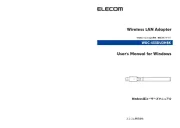
16 September 2025
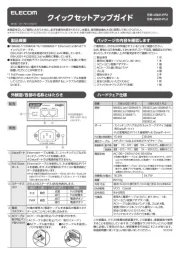
15 September 2025

15 September 2025
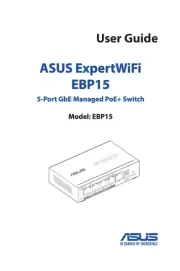
31 Augustus 2025
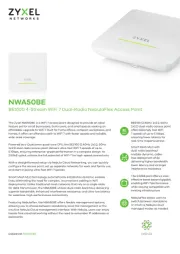
11 Augustus 2025
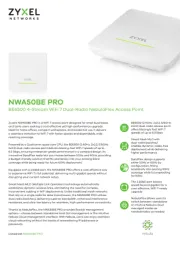
11 Augustus 2025
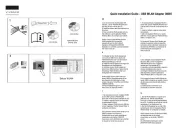
5 Augustus 2025
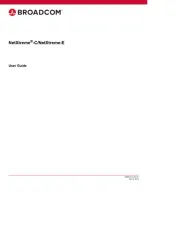
29 Juli 2025
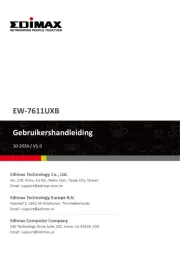
28 Juli 2025
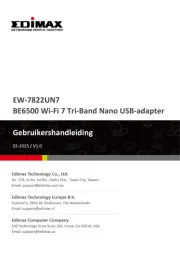
28 Juli 2025